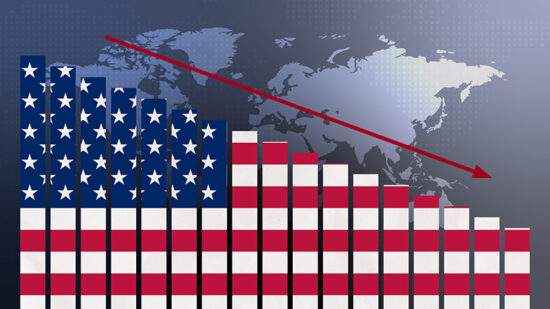Since the introduction of Abenomics up until the end of November last year, Japanese equities had outperformed global equities. From 1 December 2012 to 30 November 2015, the Topix Index has returned 12.75% annualised in dollar terms compared with a 9.16% return for the MSCI ACWI Index. The outperformance has largely been driven by the highly loose monetary policy of the Bank of Japan and signs of an economic rebound.
Abenomics is the name given to the new economic policies introduced by Japanese prime minister Shinzo Abe in December 2012, after his re-election to the post he previously held in 2007. His aim was to revive the sluggish economy with ‘three arrows’: a massive fiscal stimulus, more aggressive monetary easing from the Bank of Japan and structural reforms to boost the country’s competitiveness. These measures have resulted in a dramatic weakening of the yen and a rise in the Topix. Japan’s central bank has also introduced an inflation target of 2%.
Shaky structure
Three years into Abenomics, it still remains uncertain whether these actions will fix Japan’s economy, which has profound structural problems. It has a shrinking population, misallocation of investment, enormous public debt, protectionist lobbies in service industries and agriculture, and inflexible labour practices. That said, extraordinary monetary stimulus has led to a strong rally, and many investors saw unprecedented fiscal and monetary expansion as a good enough reason to buy Japanese equities and sell the yen.
Japan’s stock market recovery was initially driven by exporters. Yen weakness has made export-oriented companies such as Toyota and Ricoh more competitive relative to their global rivals, and bolstered their earnings, even though structurally not much has changed for those companies. Financial companies have also performed well, supported by robust equity markets and the expansion of businesses overseas, amid the relatively weakened competitiveness of their US and European counterparts after the financial crisis. The flood of government liquidity has also helped generate higher profits.
Home security
In the second half of the Abenomics-induced bull run, investors’ focus has shifted towards domestic demand-driven stocks. Domestically and especially defensively-positioned stocks have gained from growing uncertainties in the global economy, as an increasing number of investors have sought safety in those stocks. Sectors such as retail, foods, pharmaceuticals and telecommunications have outperformed the more cyclical and export-oriented sectors during the past 18 months.
Taxing times
Most commentators acknowledge that the economy has improved thanks to Abenomics. However, the question remains whether Japan’s economic recovery can be maintained and produce sustainable growth, instead of simply being a cyclical upturn. In other words, whether the government will be able to successfully implement the ‘third arrow’ of structural reform and strengthen Japan’s real economy.
So far, since Abenomics was introduced, the GDP figures barely suggest even a qualified success, indicating little progress has been made. Consensus forecasts indicate GDP growth of around 1% in 2016 following an anticipated 0.6% in 2015. The principal factor is an ongoing depression in household consumer spending (some 57% of the economy), which has failed to recover from the sales tax hike in April 2014.
Indeed, it is only as a result of expected positive contributions from government spending, inventory build and net trade that the economy will have expanded in 2015 at all. In addition, the inflation target still appears well out of reach. Further government and central bank support measures may be required to achieve respective growth and inflation targets, with plans to raise wages a key issue.
New approach
More positively, one area that is undergoing a significant change is the attitude of Japanese companies towards corporate governance and shareholder value creation. This is leading to an increasing number of dividend hikes and share buybacks.
The latest wave of Japanese corporate governance reform was kicked off by the launch of the JPX-Nikkei 400 Index in January 2014. The important point about this index is that it has an explicit 5% return on equity threshold, giving companies the incentive to increase shareholder returns.
Since then, further reforms have included the adoption of a stewardship code that encourages investors to act and vote as owners of businesses, and the corporate governance code, which came into force at in June 2015.
From a valuation perspective, Japanese equities remain among the cheapest in the developed world, both relative to their history and other developed countries. Japanese stocks currently trade at a 1.3 price-to-book ratio, almost half that of global equities.
Japanese equities are an attractively valued asset class. They currently benefit from a number of strong supporting factors: the very weak yen, cheap valuations and a strong outlook from a political point of view.
However, some risks remain, including sensitivity to the global macro environment and global industrial production, movements in the yen exchange rate and structural issues.
Click through the following pages to find out which funds to watch…








